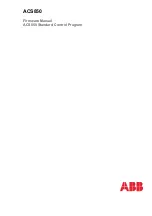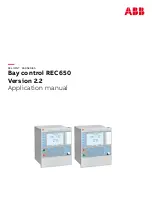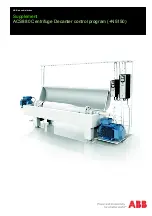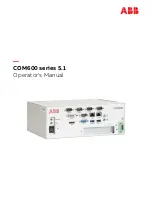
2
VALVE CONSTRUCTION
The standard Figure 250-DOC Swing Check Valve
has a cast iron or ductile iron body, bolted steel cover,
stainless steel body seat, stainless steel hinge shaft
and cast iron disc with a rubber disc seat. Refer to
the List of Materials submitted for the order if non-
standard materials were provided.
Refer to Page 5 for details of construction and parts
location.
START-UP
The valve generally does not require any calibration
or adjustment prior to start-up. The counterweights
supplied with the valve are designed to pull the valve
closed before flow reversal occurs and their position
along the counterweight arm is not adjustable.
The striker plates (47) should both be equally
adjusted so there is a 1/8
” gap between it and the
counterweights (31). Lock the striker plate with the
jam nut (48).
The valve should smoothly swing open as flow
through the valve increases. The amount of opening
depends on the flow velocity through the valve and
can be observed by watching the
external
counterweight arm
. The valve is “full ported” at about
25 degrees of swing but can swing open as much as
60 degrees.
Observe the counterweight arm when the pump is at
full speed. Oscillation of more than a few degrees up
and down can contribute to premature shaft bearing
wear.
Before making any corrections, shut down the pump
and o
bserve the valve’s closure. If closure was
smooth and quiet, then remove one of the weights
and re-start the pump. Observe if the oscillation is
diminished and shut down the pump. Repeat these
steps to the point where the valve opens to the extent
possible but still closes quietly.
In extreme cases, it may be necessary to install
additional counterweight(s) to effect non-slam closure.
OIL-CUSHION CHAMBER (Shock Absorber)
The oil-
cushion chamber cannot retard the valve’s
closure or prevent the valve from being slammed shut
due to the tremendous forces of the reversing water.
Non-slam
operation
is
achieved
when
the
counterweights quickly pull the valve disc through the
decelerating forward flow and fully close the valve
prior to flow reversal.
The oil cushion chamber is installed directly beneath
the counterweights. When the valve is closed there
should be a slight gap (approximately 1/8
”) between
the counterweight and the shock absorber striker
plate.
During gradual valve closure, the counterweights may
not engage the oil cushion as there would be no need
for cushioning. This may occur when a VFD ramps
down or the pump/motor has high inertia with a
prolonged coast down.
However, when there is a rapid check valve closure,
the inertia of the falling heavy counterweight will
cause the counterweight arm to deflect when the disc
engages the valve seat. The counterweight arm is
specially designed to deflect a controlled amount
allowing the shock absorber to
“catch” and decelerate
the rapid downward movement of the counterweight
arm after the valve has quietly closed.
PREVENTIVE MAINTENANCE
Figure 250-DOC Swing Check Valves require no
scheduled lubrication, adjustment or preventive
maintenance.
A monthly inspection should be performed for the first
6 months of operation to ensure the valve is
functioning properly and there is no external fluid
leakage or audible evidence of water leaking
backwards through the closed valve.
Thereafter, a quarterly visual inspection should be
performed.
TROUBLESHOOTING
•
Shaft packing leakage
Tighten packing gland nuts equally just
enough to stop leakage, no more than ½ turn
at a time. DO NOT OVER-TIGHTEN!
Replace packing if necessary.
•
Leakage past seat when closed
Inspect valve for debris, clean
Inspect seating surfaces for damage, replace
as necessary
•
Leakage past cover or flange gaskets
Tighten cover or flange bolts
•
Disc oscillating when open
See Start-up Procedure
•
Valve slams upon closing
See Start-up Procedure
Ensure shaft packing is not too tight
WARNING
Removing the valve from the line or disassembling
the valve while there is pressure in the valve body
may result in injury or damage to the valve
WARNING
Follow all applicable safety regulations and codes and
read and understand all instructions before
undertaking disassembly.
DISASSEMBLY
All Figure 250-DOC valves can be serviced while the
body remains connected to the pipeline. A skilled
technician should perform all work. No special tools
are required.

























